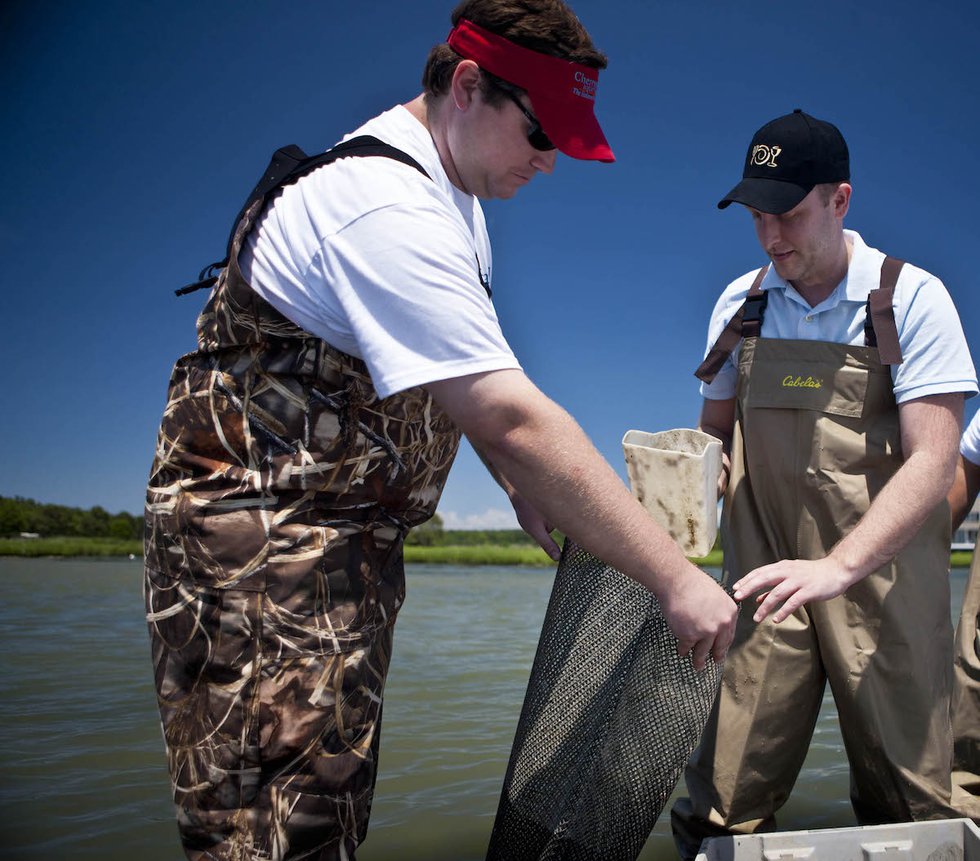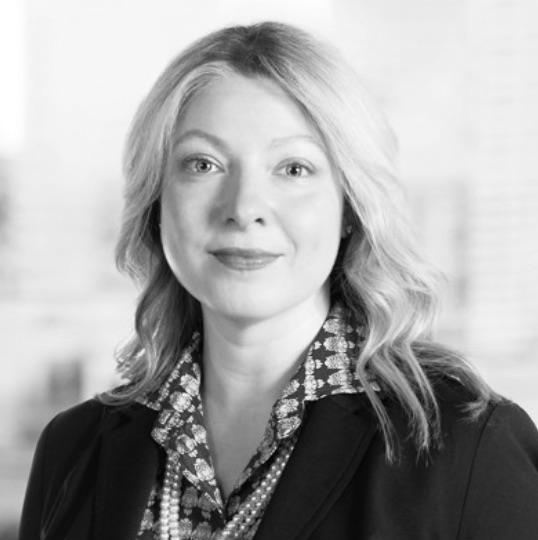Hailing from a long line of oystermen, Chad Ballard III has good reason to be optimistic about the future of his family’s 120-year-old business.

Chad Ballard, on left.
Photo courtesy of Chad Ballard III
Fifth generation owner and president of Ballard Fish & Oyster Company in Cheriton, on the Eastern Shore, Chad Ballard III talks to us about his family’s history in cultivating and harvesting seafood and the changing face of the oyster industry in Virginia.
Oyster harvesting has evolved significantly with aquaculture. How has that changed your business?
The farming of oysters has been happening in Virginia in large volumes for a long time. What is happening now is an expansion to the use of hatchery-raised oyster seed as opposed to the cultivation of wild oyster seed. Hatchery-raised seed is most often used for culturing single oysters, usually in bottom or floating cages, that are eaten raw on the half-shell or used in dishes like oysters Rockefeller. Wild oyster seed is grown on the bottom for shucking oysters that end up in fried oyster baskets or casseroles.
Would your great-great grandfather recognize the business today?
Probably. Even back in our early days we were seeding private oyster beds. But he would most likely be in awe of how much more we have to work to cultivate and farm these products than was done historically.
Decades ago there were many earning a living as watermen, now there are fewer but larger businesses involved in oystering. Is there room in the industry for smaller competitors today?
I do not believe the decline in watermen is due to the proliferation of fewer and larger businesses. Similar trends have occurred in other industries, but not in the shellfish industry. The decline in the number of watermen in Virginia is largely due to the lack of oysters. Virginia’s oyster industry is a fraction of the size it used to be. Oysters used to be consumed as a bar snack much the way peanuts are consumed today. While there has been growth in the industry in recent years, oyster populations are still at 1 percent of historic levels. The shellfish industry is still very fragmented and is made up of small businesses, so there is absolutely room for small companies. The hardest thing about our industry is finding people who want to work on the water. Everything is harder on the water and Mother Nature has a way of punishing you for every mistake you make.
What does it take to be successful in this business?
The only thing that is required is to have an extreme passion for producing shellfish. It often doesn’t make sense, and the profits come nowhere close to justifying the risk. Someone once told me that they believed my grandfather would abandon a dump truck full of gold on the side of a bridge if he thought there was a bushel of oysters in the water below.
How do you like your oysters and who do you like to eat them with?
I like my oysters full of salt—Seasides only! And naked with no sauce or condiments. My favorite person to eat oysters with is Mike McGee, an “Old Salt” from Chincoteague Island who helps us grow our Chincoteague Salts. No matter how great of an oyster we might be enjoying, Mike will have a million reasons why it isn’t as good as a Chincoteague Salt from Pope’s Bay.
This article originally appeared in our Smoke & Salt 2018 issue.









